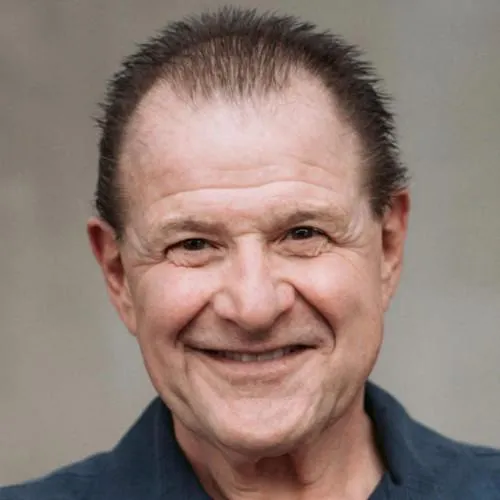The Human View™ Blog

From Noise to Signal: Are They Receiving You?
In radio communications - and in audio processing, imaging, neuroscience and even data science, there is a crucial concept: the signal-to-noise ratio (SNR).
It measures how much meaningful information (signal) exists in a message or system compared to irrelevant or distracting content (noise). A high SNR means the message is clear and focused, while a low SNR indicates the signal is buried in clutter, making it harder to discern or act on.
The benefits SNR
In the benefits world, let's be honest: much of what we've been calling "benefits education" and “communication” has become noise.
It’s not that the content is bad. It’s just not well-calibrated. We blast information across channels—email, intranet, text, postcard, manager toolkits—with the assumption that if we say it often enough, in enough ways, people will get it; that repetition creates understanding. That saturation creates interest. But does it really? Or does it just result in fatigue?

Here's a critical distinction:
What’s noise to one person might be signal to another—but we keep sending the same frequency to everyone.
Let’s take the Health Savings Account (HSA), for example. One of the most powerful and misunderstood tools in the benefits toolkit. For some employees, the HSA is a tax-advantaged investment vehicle with triple compounding. For others, it’s a confusing acronym attached to a health plan with a scary deductible. And for still others, it’s a lifeline—a way to afford necessary care without going into debt.
Same benefit. Completely different signal—depending on who’s listening.
That’s where personalization comes in. It's far more than demographics or generational differences. It’s not age, gender, income, or job level. It’s mindset. It’s what people care about, what motivates them, what stories they tell themselves about their health, their money, their choices. And when you know someone’s personality type, you can stop shouting - and start resonating. Because now you can find the signal.

Refining noise into signal
Think about it like this: each employee is carrying an invisible “tuning fork” inside them. It vibrates when something hits the right frequency—when the message feels personal, meaningful, emotionally relevant. Personalization targets the distinct frequencies that will create that resonance - for different types of people. It gives you the power to shape information into signal.
Without it? You’re just hoping. Guessing. Broadcasting. And in this era of information overload—when attention is the most valuable currency we have—"hopium" is a terrible strategy.
We’ve all seen the stats. Employees don’t understand their benefits. They don’t use them. They don’t care. Well, it’s not that they don’t want to care. It’s that nothing is breaking through the noise.

So, is attention span the real problem—or is it relevance?
The human brain is a magnificent filter. It’s wired to ignore anything that doesn’t feel immediately useful, true, or emotionally charged. When a message is generic, the brain says: “Not for me.” But when a message clicks—when it speaks the internal language of that person’s worldview—it makes it through the filter.
That’s the shift we need to make.
Triggering the subconscious "this is worth my attention."
To do that, we've got to move beyond "education” and start crafting invitation. We need to stop trying to “communicate” and start connecting.
Because the benefits themselves aren’t the issue. The stories we’re telling about them are. And when we tailor those stories to the different ways people perceive the world—through the lens of their world views, their beliefs, their motivations, their priorities and preferences (also called psychographics), we don’t just inform. We engage.

Awakening curiosity; triggering action.
We've moved from noise to signal; we've dramatically improved the Benefit SNR.
And once employees start experiencing communication this way—once they feel seen and heard instead of just talked at—it changes the game. Now you’ve opened a channel. Now you’re beginning to earn their trust.
Now you can build a relationship over time—where benefits become part of their personal narrative, not just a bullet list in an open enrollment guide.
So the question we should all be asking isn’t “How do we say this more clearly?” It’s “What does this sound like to them?”
We may not get to a spicy jazz riff, or a symphony, or an Eddie Van Halen guitar solo, but maybe we get to a grin instead of a grimace.

If we want better engagement, better decisions, and better outcomes, we need to stop mass-producing static and start transmitting resonance.
The last word
Personalization isn’t a nice-to-have anymore. It’s the transformer that tunes information into insight—for them. And that’s how to upgrade "communications" from noises to signals.
~ Mark Head
© 2025. All Rights Reserved.
Aspirations
“The skill is in discerning the signal amidst the noise — not in amplifying both.
~ Anonymous

Click the green button or the blue button (below) to visit our scheduling pages.




Mark Head
President
With 4 decades of combined experience in employee benefits consulting, wellness and health management, Head brings a unique combination of dynamic perspectives into a clear vision of where the future of health care is moving - and it's moving towards deeper human connection, awareness, and engagement...
Follow Us On
© 2025 Benefit Personas, LLC. All Rights Reserved.

